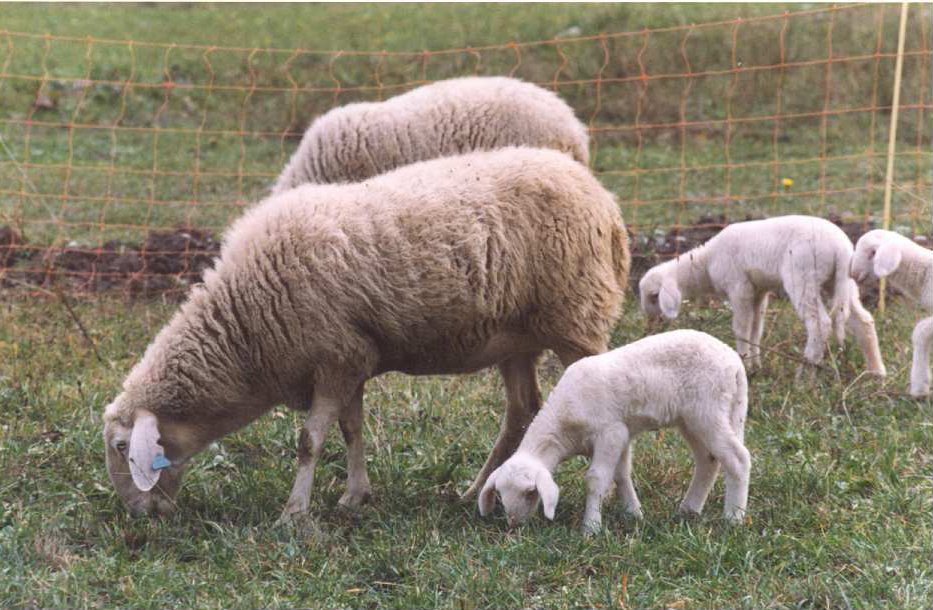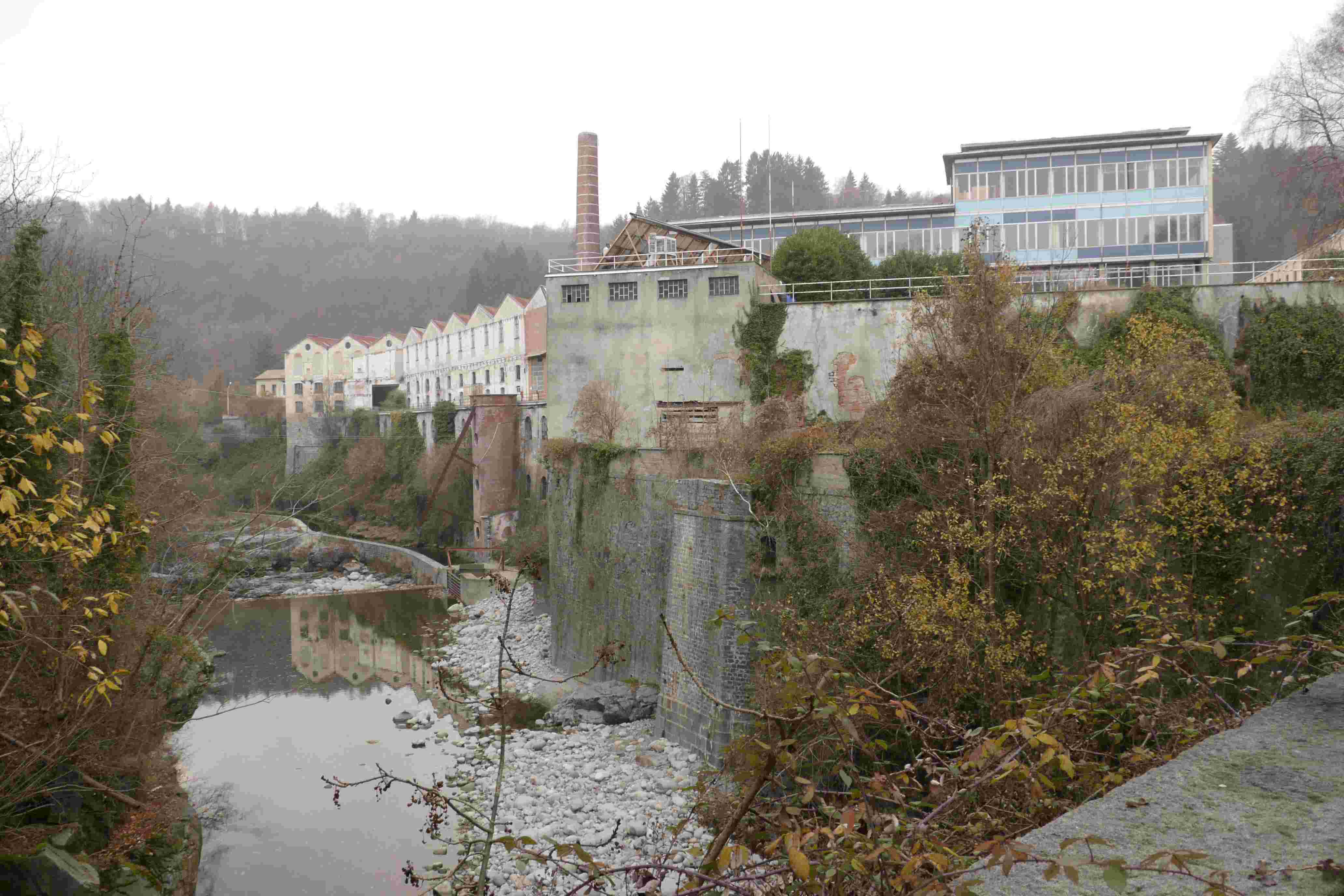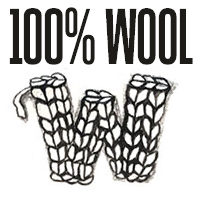For today’s stop on the Wovember Words tour of EU sheep and wool we are in Italy where the word for sheep is pecora, and the word for wool is lana. We have two contrasting reports – one that speaks of the demise of the native Sambucana sheep breed of the Stura Valley, and one that sings the praises of a new initiative in Italy – Biella The Wool Company – devised to restore profitability to the woolgrowers of Italy and other European countries.
Farewell to the white treasure: it is now a museum piece
Demonte in the upper Stura Valley is another world; scent of wood from open fires, bleating of sheep on the now grey meadows. “In these days of Autumn, up to thirty years ago, the wool of sheep was everywhere. Piles in front of houses, waiting to be washed. Inside the house, waiting to be carded. And you could hear the noise of the looms for weaving, and that went on throughout the ‘winter. It was our treasure, the wool.” Stefano Martini, the of the Escaroun consortium (for the protection of Sambucana) sheep is a man resigned.
“Now, if you want to see the wool and looms, you must come to our museum of sheep, up to Pontebernardo. The sheep are still there, and we have also recovered the breed Sambucana that was threatened with extinction.
But wool is not worth anything anymore, not even the cost of shearing. And to think that we all wore wool until the end of the 1970s: from cap to socks, from vest to sweater. We slept on woollen mattress and under woollen blankets. Then came modernisation; we all went to the plains to work for Michelin, to be able to buy Terylene sweaters and foam mattresses.”
For centuries, the shepherds of Abruzzo took their wool to Rome and returned with saddlebags filled with gold. “Now” says Anthony Brignone, agricultural engineer of the Mountain Community Stura Valley “the shearing of a sheep costs €2.5 euro and the wool is collected – three pounds weight per animal – in theory the shepherd is paid €0.35 per kilo… the money received for the wool of five sheep just about pays for the shearing of one. This is absurd, because the animals are shorn anyway. If it is not cut, the wool falls away in patches. You have to pay shearers and then throw away the wool or send it – at a price – to a landfill.”
A wool mattress was once the most valuable piece in the dowry of a bride; a woollen coat was a clear signal announcing the prosperity of its wearer. Now wool is refuse. “And it is” says Giampiero Maracchi, director of ‘the CNR Institute of Biometeorology – “a specialised waste, which must be disposed of at a high price, because wool is considered hazardous like hospital waste or asbestos. The high cost of disposal causes many shepherds to bury or burn the wool produced.”
In Italy there are still 8 to 9 million sheep*, which produce (last 2004 Istat) 93,000 quintals of “greasy wool”, even to wash. “95% of this wool” says Professor Maracchi “ends up in landfills or is burnt or buried. The remaining 5% is used in construction for thermal insulation, or by craftsman for the production of felted purses and hats. Wool, even today, could be an important resource. By wearing warmer clothes, we could lower our central heating by 2-degree during the winter: in this way we would make 20% of energy savings under the Kyoto treaty. Of course, the woollen clothes of the past were really heavy; a piece of clothing of our grandparents weighed on average 550 grams per square meter, while today the weight is about 200 grams. But modern fabrics almost all come from abroad and we have to calculate their cost in terms of pollution. Today wool is bought in Australia, is partially processed in Prato, and then gets shipped to China in order to become a finished product. And so it is that the jacket we wear has traveled tens of thousands of kilometers before arriving on our shoulders. In the past when we used Italian wool or other fibers such as hemp, the textile industry began and ended locally.”
Even in Demonte and other counties of the Stura valley the chain was complete. “All women” says Stefano Martini “knew how to work the wool. Among the Sambucana sheep, which are white, there are also black sheep. And then, for centuries, we could use those different sheep fleece shades to produce a variety of colours with no need for dye. For some years, with the Escaroun consortium (in Occitan language Escouran means ‘small group of sheep leaving the flock to seek better pastures’), we also value the sambucano Lamb, which is also Slow Food – born in the late spring and kept in pasture with his mother.”
“We market scarves, sweaters, throws and gloves made with our wool for sale in markets and fairs. Revenue, however, is still minimal. Unfortunately, the knowledge of carding and weaving has been lost, and we can only produce artifacts of pure Sambucana wool with the assistance of the wool mill at Piacenza Cashmere. Now only the older people remember the full value of sheep; the other day an old man came in a consortium asking where to find a beautiful bunch of freshly shorn wool. He wanted to sleep in the middle, to heal a bad case of rheumatism. He told us that this practice had always helped him in the past.” Sergio Foglia Taverna, director of production at Piacenza Cashmere Pollone, says that even the shepherds of the Stura valley have turned to his company “because it is one of the last domestic wool mills… some jobs are just gone: once there used to be “scartine”, women who knew how to skirt dirty fleeces, discarding the worst parts. The decline of this domestic industry and these jobs are some of the reasons why Italian wool has disappeared from the market. We only use the Sambucana for the sweaters and plaid sought by the consortium. We also prepare jackets hunting and mountaineering uniforms. But Italian wool comprises less than 1% of our entire turnover. Italian wool is generally too coarse – 33-35 microns. Sambucana is a bit better at 25-26 microns. But now the customer has become accustomed to softer wool, coming from ‘Australia and New Zealand which is bought in Biella, and costs us €3-5 per kilo. The tiny quantities of Italian wool that are marketed fetch around €0.30 per kg”. There are other attempts to revive the native wool market. Ascoli are preparing plaid and caps; in Sardinia they are working to resurrect Orbace. “The challenge can be won” says Giampaolo Tardella Coldiretti “if we can reconstruct a local supply chain, with a hallmark. The Italian wool cannot remain just a memory.”
Text © Jenner Meletti, published October 27th, 2008, in La Republicca and translated by Google translate, then smoothed into readable English by Felicity Ford; if facts have become lost of confused in translation, please – as ever – write to wovember [at] gmail [dot] com to let us know.
 La Pecora Sambucana – the Sambucana sheep, saved from extinction. Image taken from this article on the breed from The Wool Box blog
La Pecora Sambucana – the Sambucana sheep, saved from extinction. Image taken from this article on the breed from The Wool Box blog
The Sambucana is just one of the rare Italian sheep breeds threatened by the commercial pressure for softer wool; happily, a consortium called Biella The Wool Company is working to turn around the situation outlined above. The following text is taken from a book titled ‘Miagliano reawakens to the magic touch and scent of wool’ by Della Livorno and published in June, 2016, through Lulu.com:
What is BTWC? It is a non-profit consortium whose mission is to develop various activities with regards to wool, including the wool processing systems from local and European woolgrowers, utilizing small amounts of wool. These woolgrowers have expressed the need to process their grease wool into scoured wool, yarn, and cloth or felt that can be traced back to the single woolgrower him/herself. The company was founded in 2008 and became active inside the ancient former Pomas’ cotton mill, later known as Bottos’ wool mill, at Miagliano, in Vittorio, Veneto Street, 2, in 2009, where it has its headquarters. It is the first European centre for the collection and sorting of grease wool from small farmers.

Biella The Wool Company is a non-profit-making broker between farmers and industry; an interface between the scourers, spinners and processors, and the woolgrowers of Europe. There is no central marketing system for Italian wool like the BWMB which we have here in the UK, and greasy wool is treated as a waste product on Italian farms. In fact farmers must pay €200 to have waste wool disposed of responsibly. Biella The Wool Company offers an alternative route; a way to restore this raw product to its once celebrated status of “white treasure”.
Links:
Deborah Gray regularly teaches hand spinning in Biella; her blog often details visits to Biella The Wool Company and is a lovely woolly read!
You can buy Italian Wool from the sister company of Biella The Wool Company – The Wool Box – here
A sadly failed Italian Kickstarter project aimed to combine Italian waste wool with recycled plastic to produce sustainable outerwear – it was called What a Waste and you can read about it here
There is a very interesting article here about the revival of an indigenous Italian wool trade
In March this year, Sardinian sheeps’ wool was identified as a key material for the cleaning of seawater polluted by oil spillages and refuelling in ports;
…real floating oil absorbing water-repellent barriers – in the shape of sausages, cushions, sleeves and buoys are the first in the world that are able to naturally carry out (with no additives) the two tasks of absorbing and biodegrading petrochemical hydrocarbons and other pollutants for the benefit of healthy clean seas that protect biodiversity. One need only consider that 1 kg of Geolana – according to the specific weight of the compound – absorbs 8-14 kg of petroleum derivatives or nitrogen pollution…
The header image for this post features Sardinian ewes and lambs. It was found on Wiki Commons and is attributable to Marcello Mundula
*this article was written in 2004; the Italian sheep population has now fallen to around 7 million
